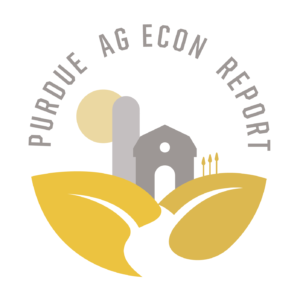2012 Agricultural Outlook
October 23, 2011
PAER-2011-08
Larry DeBoer, Professor; Chris Hurt, Professor; Craig Dobbins, Professor; Phil Abbott, Professor; Nicole Olynk, Assistant Professor; Roman Keeney, Associate Professor; Corinne Alexander, Associate Professor; Bruce Erickson, Agronomic Ed. Manager; Alan Miller, FBM Specialist; Amber Remble, Graduate Student; Michael Schultz, Professor
The Indiana agricultural economy remains strong in 2011. Even though yields were sharply reduced by a spring that was too wet and a summer that was too hot and dry, prices for corn and soybeans will be high enough to provide near record revenues for the state’s two major crops. The driving demand forces for crop agriculture are expected to remain favorable for 2012. These include: the continued growth in corn use for ethanol; the continued expansion in soybean purchases by China; and a general weakness of the U.S. dollar, which tends to strengthen commodity prices.
The biggest concerns will arise from the struggling economies in the U.S., Europe, and Japan. The collapse of world economic growth in late 2008-2009 sent commodity prices into a tailspin. For that reason we open with a discussion of the potential for a double-dip recession in the U.S. in the coming year. Weak economic growth is a formidable threat to high commodity prices.
The bottom line for the crop sector is that high incomes are being bid into land values and cash rents. We see that trend continuing for 2012. Thus, not only are crop farm incomes high, but equity increases from land appreciation are large as well.
The Indiana livestock sector generally had a positive financial year in 2011 as they reduced per capita supplies sufficiently to garner higher prices for their animal products. Early indications of a modest 2012 expansion in animal output puts those returns in jeopardy, depending on how high feed costs are.
